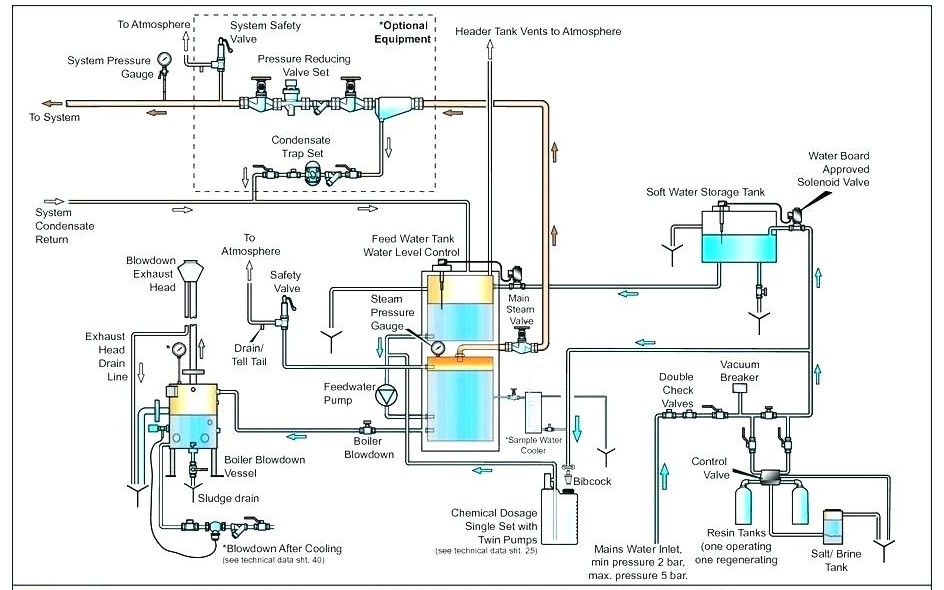If the burner will not start or operate properly, refer to the troubleshooting chart below for assistance in pinpointing problems that may not be readily apparent.
The program relay has the capability to self-diagnose and to display a code or message that indicates the failure condition. Knowledge of the system and its controls will make trouble shooting much easier. Costly down-time or delays can be prevented by systematic checks of actual operation against the normal sequence to determine the stage at which performance deviates from normal. Following a routine may possibly eliminate overlooking an obvious condition, often one that is relatively simple to correct.
If an obvious condition is not apparent, check the continuity of the circuits with a voltmeter or test lamp. Each circuit can be checked and the fault isolated and corrected.
Burner Troubleshooting Problems and Solutions
PROBLEM SOLUTION
BURNER DOES NOT START
- No voltage at program relay power input terminals
A. Main disconnect switch open
B. Blown control circuit fuse
C. Loose or broken electrical connection
-
Program relay safety switch requires resetting.
-
Limit circuit not completed-no voltage at end of limit circuit program relay terminal.
A. Pressure or temperature is above setting of operation control. (Load demand light will not glow.)
B. Water below required level
-
Low-water light (and alarm horn) should indicate this condition.
-
Check manual reset button, if provided, on low-water control.
C. Fuel pressure must be within settings of low-pressure and high-pressure switches.
D. Oil fired unit - burner gun must be in full forward position to close oil drawer switch.
E. Heavy oil fired unit - oil temperature below minimum settings.
- Fuel valve interlock circuit not completed.
A. Fuel valve auxiliary switch not enclosed.
NO IGNITION
- Lack of spark
A. Electrode grounded or porcelain cracked
B. Improper electrode setting
C. Loose terminal on ignition cable; cable shorted
D. Inoperative ignition transformer
E. Insufficient or no voltage at pilot ignition circuit terminal
- Spark but no flame
A. Lack of fuel: no gas pressure, closed valve, empty tank, broken line, etc
B. Inoperative pilot solenoid
C. Insufficient or no voltage at pilot ignition circuit terminal
D. Too much air
- Low fire switch open in low fire proving circuit
A. Damper motor not closed, slipped cam, defective switch
B. Damper jammed or linkage binding
- Running interlock circuit not completed
A. Combustion or atomizing air proving switches defective or not properly set
B. Motor starter interlock contact not closed
- Flame detector defective, sight tube obstructed, or lens dirty
PILOT FLAME, BUT NO MAIN FLAME
-
Insufficient pilot flame
-
Gas Fired Unit:
A. Manual gas cock closed
B. Main gas valve inoperative
C. Gas pressure regulator inoperative
- Oil Fired Unit:
A. Oil supply cut off by obstruction, closed valve, or loss of suction
B. Supply pump inoperative
C. No fuel
D. Main oil valve inoperative
E. Check oil nozzle, gun, and lines
-
Flame detector defective, sight tube obstructed or lens dirty
-
Insufficient or no voltage at main fuel valve circuit terminal
BURNER STAYS IN LOW FIRE
-
Pressure or temperature above modulating control setting
-
Manual-automatic switch in wrong position
-
Inoperative modulating motor
-
Defective modulating control
-
Binding or loose linkage, cams, setscrews, etc
SHUTDOWN OCCURS DURING FIRING
-
Loss or stoppage of fuel supply
-
Defective fuel valve; loose electrical connection
-
Flame detector weak or defective
-
Lens dirty or sight tube obstructed
-
If the programmer lockout switch has not tripped, check the limit circuit for an opened safety control.
-
If the programmer lockout switch has tripped:
A. Check fuel lines and valves.
B. Check flame detector.
C. Check for open circuit in running interlock circuit.
D. The flame failure light is energized by ignition failure, main flame failure, inadequate flame signal, or open control in the running interlock circuit.
- Improper air/fuel ratio (lean fire)
A. Slipping linkage
B. Damper stuck open
C. Fluctuating fuel supply:
-
Temporary obstruction in fuel line
-
Temporary drop in gas pressure
-
Orifice gate valve accidentally opened (heavy oil)
- Interlock device inoperative or defective
MODULATING MOTOR DOES NOT OPERATE
-
Manual-automatic switch in wrong position
-
Linkage loose or jammed
-
Motor does not drive to open or close during pre-purge or close on burner shutdown.
A. Motor defective
B. Loose electrical connection
C. Damper motor transformer defective
- Motor does not operate on demand.
A. Manual/automatic switch in wrong position
B. Modulating control improperly set or inoperative
C. Motor defective
D. Loose electrical connection
E. Damper motor transformer defective
